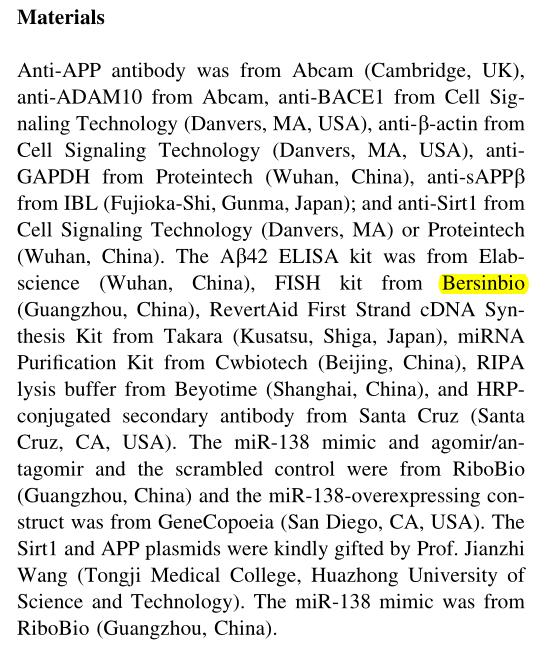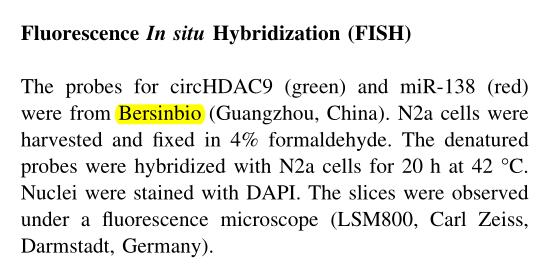
摘要
Synaptic dysfunction and abnormal processing of amyloid precursor protein (APP) are early pathological features in Alzheimer’s disease (AD). Recently, non- coding RNAs such as microRNAs (miRNAs) and circular RNAs (circRNAs) have been reported to contribute to the pathogenesis of AD. We found an age-dependent elevation of miR-138 in APP/PS1 (presenilin-1) mice. MiR-138 inhibited the expression of ADAM10 [a disintegrin and metalloproteinase domain-containing protein 10], pro- moted amyloid beta (Ab) production, and induced synaptic and learning/memory deficits in APP/PS1 mice, while its suppression alleviated the AD-like phenotype in these mice. Overexpression of sirtuin 1 (Sirt1), a target of miR- 138, ameliorated the miR-138-induced inhibition of ADAM10 and elevation of Ab in vitro. The circRNA HDAC9 (circHDAC9) was predicted to contain a miR-138 binding site in several databases. Its expression was inversely correlated with miR-138 in both Ab-oligomer-treated N2a cells and APP/PS1 mice, and it co-localized with miR-138 in the cytoplasm of N2a cells. CircHDAC9 acted as a miR-138 sponge, decreasing miR-138 expression, and reversing the Sirt1 suppression and excessive Ab production induced by miR-138 in vitro. Moreover, circHDAC9 was decreased in the serum of both AD patients and individuals with mild cognitive impairment. These results suggest that the circHDAC9/miR-138/Sirt1 pathway mediates synaptic function and APP processing in AD, providing a potential therapeutic target for its treatment.
合作部分结果:



合作技术:FISH




